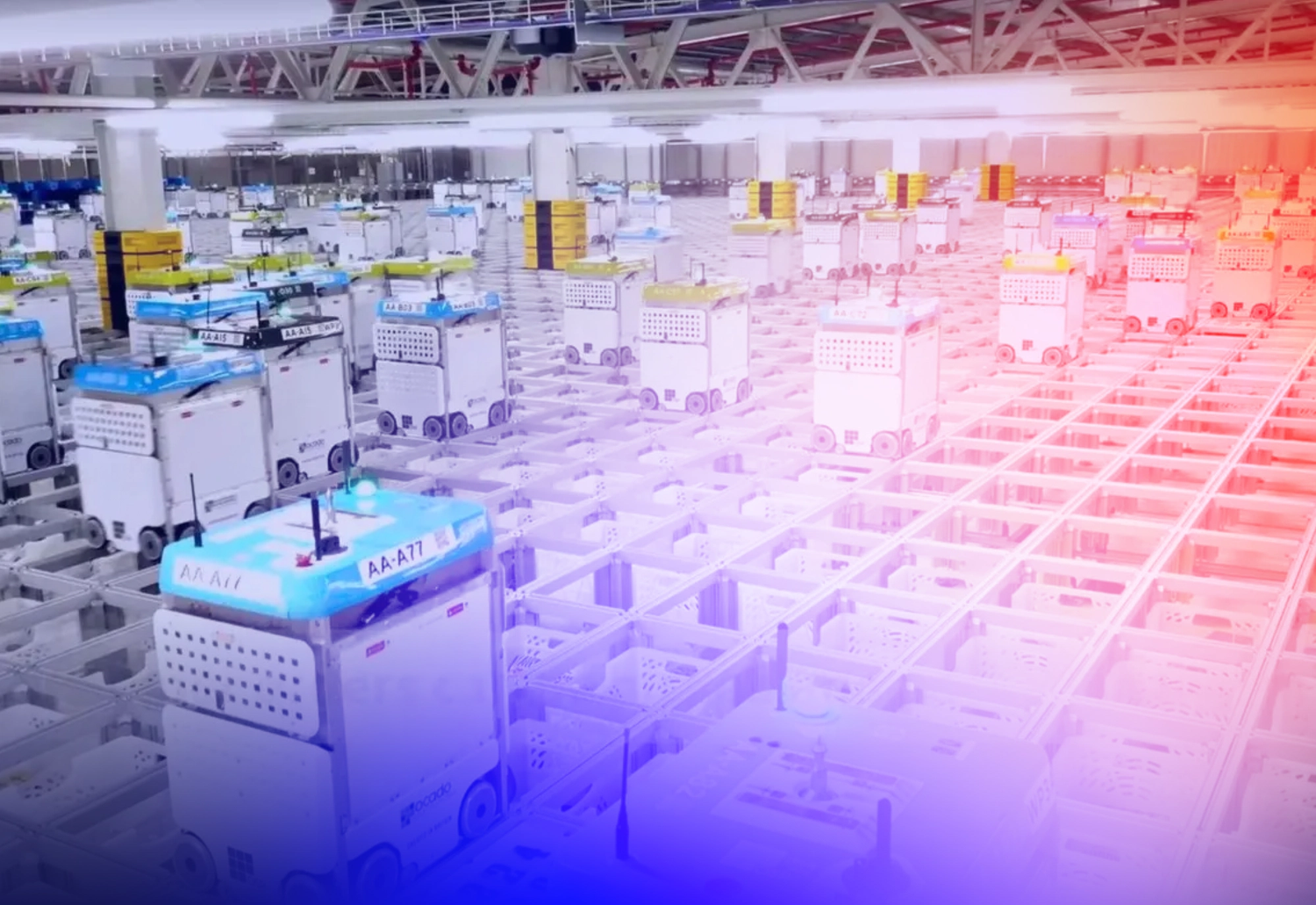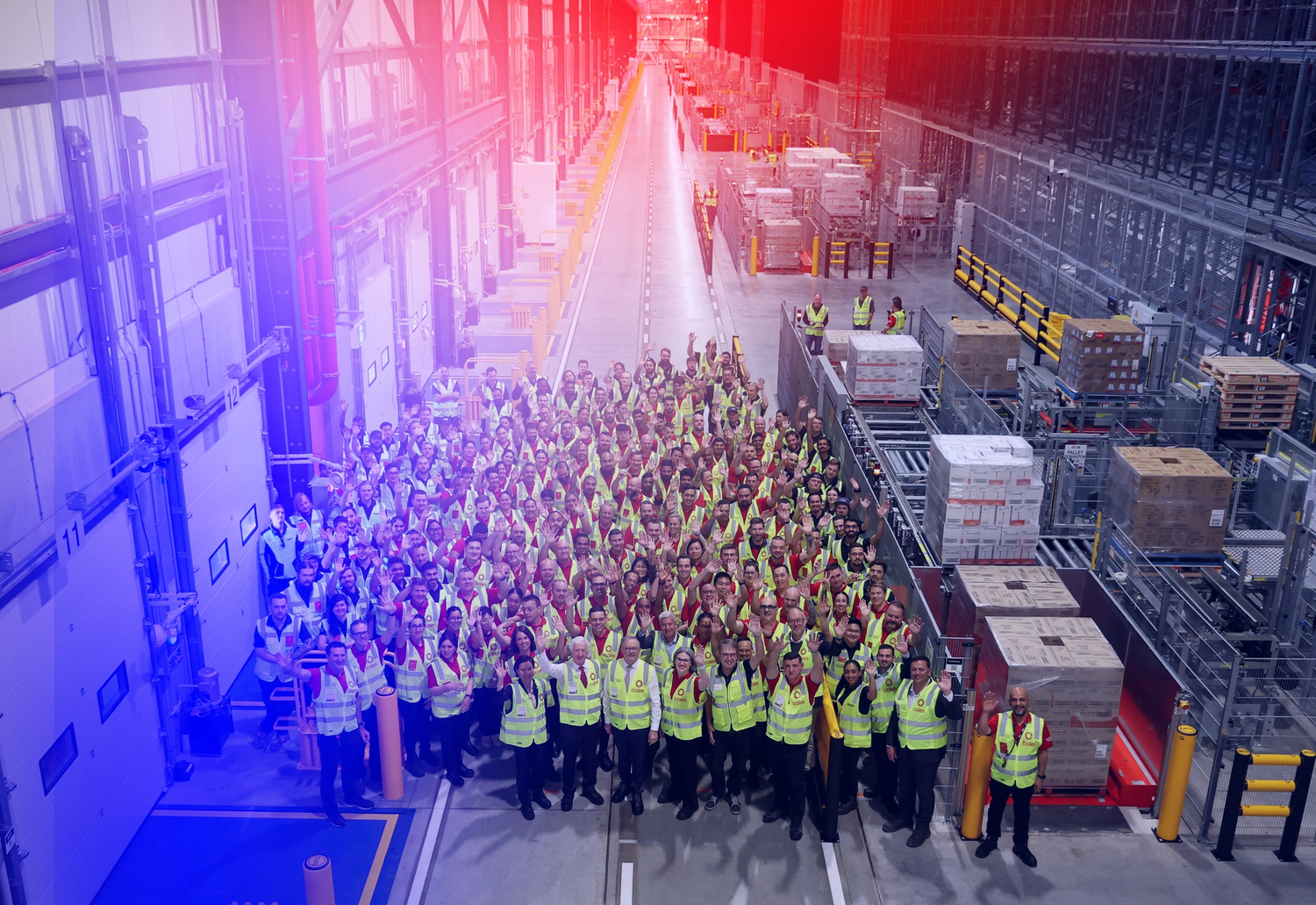Share this post

MELBOURNE, AUSTRALIA
The rise of the robots, it seems, is veering somewhat off the Hollywood sci-fi script.
It has taken an unexpected detour to the closest suburban industrial estate.
And with the backing of billions of corporate dollars, there’s no stopping it—it’s coming to a supermarket warehouse near you.
Australia’s grocery giants Coles and Woolworths are leading the revolutionary charge, rapidly harnessing robotic technology and artificial intelligence across their supply chains.
In doing so, they are reshaping the industrial property development landscape.
Not only that, but they are also providing a glimpse of what the future may hold beyond the walls of their sprawling fully autonomous, lights-out warehousing and distribution facilities—otherwise known as “dark sheds”.
READ MORE: TMX Executive Director of Property Dominic Sorbara talks to Real Commercial about darkstores
READ MORE: The robotics and automation trends in 2024
Consumers’ rising expectations and the escalating need for speed of delivery in the digital age have become a self-fulfilling prophecy.
But by going all-in on leveraging advancing technology to meet shifting customer demands, it may well not only be the warehouses but also the boardrooms that the bots take over.
Or so believes Chinese billionaire entrepreneur Jack Ma. The founder and chairman of ecommerce behemoth Alibaba predicted back in 2017: “In 30 years, a robot will likely be on the cover of Time magazine as the best CEO”. Who knows, it could be sooner.
Australia is considered one of the fastest developing markets in the world for grocery ecommerce.
In the past week alone, Coles has unveiled plans to spend an additional $880 million to expand its network of automated distribution centres (ADCs) into Victoria.
To be built at Truganina in Melbourne’s outer west, it will be its third ADC.
On completion, the state-of-the-art facility will have the ability to process 4.6 million cartons per week, servicing all stores in Victoria and Tasmania as well as integrating with Coles’ existing supply chain in South Australia and Western Australia.
The move follows the completion of its first two ADCs in New South Wales and Queensland during the past 18 months.
READ MORE: Coles opens second state-of-the-art Automated Distribution Centre
“We don’t consider ourselves a bricks-and-mortar retailer anymore,” Coles property boss Fiona Mackenzie told attendees at The Urban Developer Commercial Real Estate Summit in Sydney.
“We have a complete omni-channel strategy. I’m certainly not speaking out of school to say that prior to Covid, Coles had a very distinct strategy that was very different to Woolworths—and they were certainly ahead.”
But she said all that had changed just before the pandemic with the company making “capital bets” worth a combined $4 billion.
These included commitments to develop its first two ADCs, at Brisbane’s Redbank and Sydney’s Kemps Creek, in collaboration with leading German-based supermarket supply chain automation firm Witron.
As well, it partnered with UK-based ecommerce company Ocado to build two automated customer fulfilment centres—each with 1000 robots picking and packing online grocery orders on a so-called hive grid—in Melbourne’s Truganina and Sydney’s Wetherill Park.
“All of those are about five to six times the size of the MCG—so they’re enormous,” Mackenzie said.
Significantly, while many people thought the rise of such technology would be the death of bricks-and-mortar shopping, 96 per cent of Coles’ transactions remain in-store.
Its store sizes, however, have “incrementally and organically got smaller”.
Nevertheless, Mackenzie said from a property perspective the group still had a strong appetite to expand its portfolio, the bulk of which has grown through development partnerships.

“While population growth is continuing to be as strong as it is, Coles has a strong aspiration for new sites. Everybody needs their groceries every week…and because we now have a complete omni-channel strategy we can now pretty much service a customer anyhow and anywhere they’d like.”
Dark sheds with hundreds of dishwasher-sized robots zipping around them. Autonomous drones whizzing overhead inspecting inventory. Even a few humans donning futuristic exoskeletons enabling them to lift loads exceeding their own bodyweight.
“It’s all of that,” TMX Transform co-founder and chief executive Travis Erridge says of the warehousing and supply chain technology revolution.
Supermarkets, definitely, are leading the way in some of this automation space, just because of the volumes and variety of products … it tends to really suit grocery and helps drive efficiencies through the whole supply chain.
TMX Transform, led by Erridge and former Goodman Group colleague Milan Andjelkovic, provided end-to-end project management for Coles’ initial two ADC projects and has been tapped to do the same for its third.
The leading logistics and supply chain consultancy’s growing list of blue-chip customers also includes Wesfarmers as well as UK-based Marks & Spencer and Swire, Coca-Cola’s Hong Kong-based bottling partner, which has also led to work in the US.
READ MORE: Travis Erridge and Milan Andjelkovic talk to The Australian | TMX Transform
Most major retailers are looking to provide automation of some shape or form into their supply chain. People are ordering at all times of the day now and they have expectations.
“Customer experience became a huge part of what came out of Covid. What that means is supply chains have to be more agile and have the ability to to keep up with that demand.
“Automation provides capability into that. It can run 24/7, so it allows for quicker from order-to-dispatch times…the speed and accuracy is significantly increased. What used to take a week is now hours."
We've been automating warehouses for over 15 years as a business, and it would be highly unusual now for us not to see some level of automation in a warehouse of scale.

The development mindset in the industrial property sector has shifted with the technology, he says.
“We’ve seen an active change with developers at all levels to consider the life cycle of the building or the future use of the building, and to start to future proof in terms of what tenants and occupiers are going to need: power, floor loads, flatness and fire systems, to allow for automation to go into them.
“It’s been a pretty significant shift, and I think that will continue to evolve to keep up with where the systems are going.”
Retrofitting an existing facility as an ADC, however, is largely not an option because “the inside is designed first, and the building is effectively built around the automation”.
Meanwhile, as an investment asset class, dark sheds have emerged as the new black.
“It’s the strongest sector outside of probably data centres at the moment,” Erridge says.
“We’ve probably seen a little bit of a dropping of demand over the last six months, just because of cost of capital and the slower sort of investment that’s happened.
“But prior to that, because of Covid and because of the huge shift to omni-channel type solutions in terms of how people buy product, it has got decades of further change needed to keep up with the demand that’s out there.”
Increasingly, predictive analytics and AI are being integrated into the operations of automated warehouses, Erridge says.
“The use of big data sets on-site to make decisions on which orders you're going to pick, what sequencing they’re going to be picked in, what the likely demand areas are within your inventory range and how you move them into a more accessible location to make the pick faster. All of that is happening and it’s having a complete effect,” he says.

You just have to look at companies like Amazon, which are predicting what you're going to buy and when you're going to buy it and are able to then look at their whole supply chains and make sure it's ready for what you're going to buy before you even know you're going to buy it.
In terms of the evolution of the omni-channel mix, so-called “grey stores”—part walk-in retail, part distribution hubs—are one of the latest developments.
“It’s all about creating convenience for the customer,” Erridge says. “And convenience means complexity in the supply chain, which leads to automation.”
“There has to be continuous evolution of industrial property to keep up with that changing demand.”
And there is arguably only one thing standing in its way—constrained industrial land supply.
“Government zoning, infrastructure—you know, water, power, sewer, road networks, port connections—all these things play a part,” Erridge says.
“And if you think about the floor space that we’re talking about being taken up in each state of Australia…we need to have a view to make sure there is the right amount of available land, that there is the right investment.
READ MORE: TMX Transform CEO Travis Erridge on how the Sydney Metro will help avoid the megacity mistakes
We can't have a society that is constrained by the inability of government to keep up with the consumer change.
Meanwhile, other longstanding liabilities—that is, being a sparsely populated country of large geographical distances between its major centres—have worked in Australia's favour for once and given it an edge globally.
“Australia has been leading the way in automated solutions over the last decade,” Erridge says. “And a big part of that is it’s just an expensive place to do business and move product around.
“Definitely the work that we’re doing overseas, in the UK and US, they’re looking towards Australia for the technology and the ways that we’ve done it, because of that necessity."

But there’s still a lot of things that automation won’t do. There are still certain tasks within every operation, regardless of how automated it is, that you still need human intervention to make it happen.
As Alibaba’s Jack Ma optimistically observed: “Machines will do what human beings are incapable of doing. Machines will partner and co-operate with humans, rather than become mankind’s biggest enemy.”
And there we are back on script—just in time for another Hollywood happy ending.
This article was originally written by Phil Bartsch and published by The Urban Developer on November 11, 2024.
